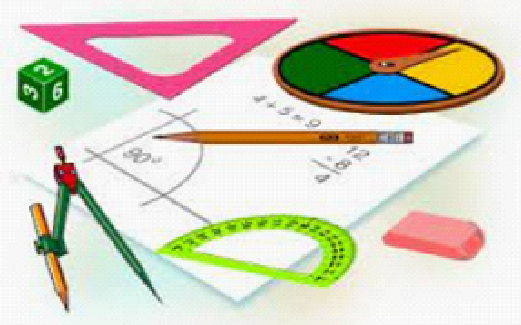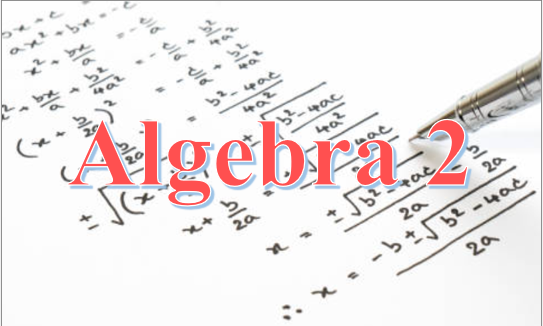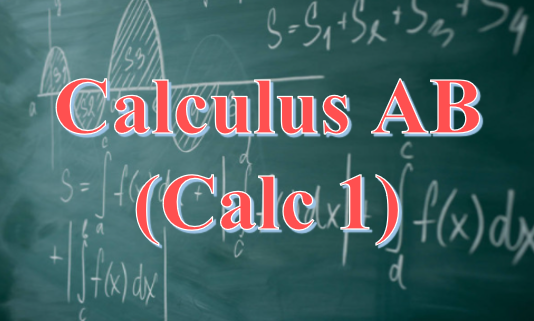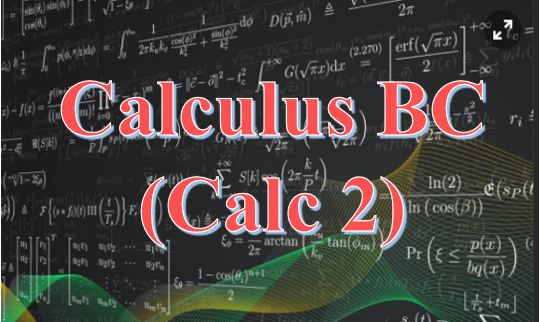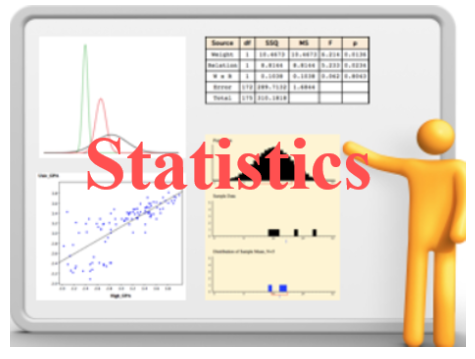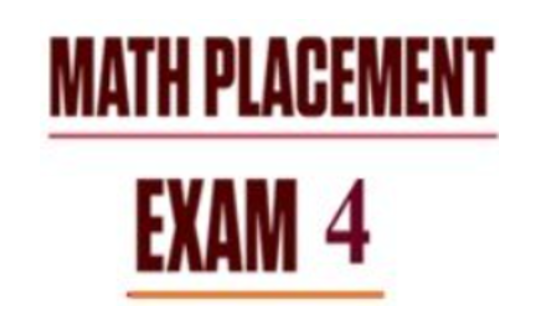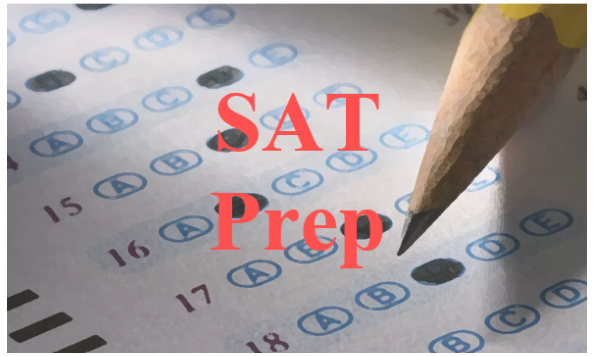Our Services
Algebra I
Algebra I is the basis for your student’s success in high school mathematics. I can help your students master the following skills:
Describing and Graphing Linear Functions, Equations and Inequalities
Calculate slope from tables, graphs or algebraically.
Write and identify key features of a line written in slope-intercept form, standard form or point-slope form.
Determine the effects on a graph when transformations are applied to a linear graph.
Graph linear functions and the solution set of linear inequalities on the coordinate plane.
Graph systems of two equations or inequalities to determine the solution(s).
Find the line of best fit for data, interpret the correlation coefficient and make predictions using the equation found.
Writing and Solving Linear Functions, Equations and Inequalities
Write and solve equations involving direct variation
Write lines through a point that are parallel or perpendicular to a given line, including the x- or y-axis.
Determine the domain and range of linear functions, both discrete and continuous, and write the using inequalities.
Write linear equations and inequalities given a table of values, graph or verbal description.
Solve linear equations and inequalities in one variable using distributive properties and having variable on both sides.
Solve systems of two linear equations using substitution and elimination.
Quadratic Functions and Equations
Determine the domain and range of a quadratic equation and write using inequalities.
Write a quadratic in vertex form given a point and the vertex, then rewrite in standard form.
Graph a quadratic function and identify key attributes such as x- and y-intercept, vertex, max or min values and the axis of symmetry.
Determine the effects on the graph when transformations are applied.
Solve quadratic equations by factoring, taking the square root, completing the square and applying the quadratic formula.
Understand the relationship between the linear factors and the zeros of a quadratic function.
Write the best fit quadratic function for data and make predications using the equation.
Number and Algebraic Methods
Add, subtract and multiply polynomials of one and two degrees.
Apply the distributive property to rewrite polynomial expressions.
Determine the quotient of degree one and two polynomials.
Factor trinomials with real factors.
Determine if a binomial can be rewritten using difference of perfect squares.
Simplify expressions using laws of exponents.
Simplify radical expressions.
Determine whether relations represent a function.
Evaluate functions written in function notation with one or more elements in their domain.
Identify terms of arithmetic and geometric sequences.
Exponential Functions and Equations
Determine the domain and range of exponential functions and write it using inequalities.
Interpret the meaning of the coefficient and the base of an exponential function.
Write and graph exponential functions for real world problems involving growth and decay.
Write a best fit exponential function to data and make predictions using the equation.
Geometry
Logical Argument and Constructions
Understanding the meaning of undefined terms, definitions, postulates, conjectures, and theorems.
Investigate patterns to make conjectures about geometric relationships. Identify and determine the validity of the converse, inverse, and contrapositive of a conditional statements. Verify that a conjecture is false using a counter example.
Construct congruent segments and angles, segment and angle bisectors, perpendicular lines and perpendicular bisector of a line, and a line parallel to a given line through a point using only a straight edge and a compass. Use the constructions to ake conjectures about geometric relationships.
Coordinate and Transformational Geometry
Derive and use the distance, slope and midpoint formulas to verify geometric relationships such as congruence of segments and parallelism or perpendicularity of a pair of lines.
Determine an equation of a line parallel or perpendicular to a given line that passes through a point.
Describe and perform transformations of figures in a plane using coordinate notation.
Determine the image or pre-image of a given two-dimensional figure under composition of rigid transformations, a composition of non-rigid transformations, and a composition of both including dilations with the center at any point in the plane.
Identify the sequence of transformations performed on a pre-image to obtain an image and distinguish between reflectional and rotational symmetry.
Determine the equation for the graph of a circle with a radius r and center (h, k) using the formula (x-h)2 + (y-k)2 = r2.
Proof and Congruence
Apply the definition of congruence in terms of rigid transformations, to identify congruent figures and their corresponding parts.
Verify theorems about angles formed by the intersection of lines and line segments, including vertical angles, and angles formed by parallel lines cut by a transversal. Also prove equidistance between the endpoints of a segment and points on its perpendicular bisector and use these relationships to solve problems.
Verify theorems about the relationships in triangles, including proving the Pythagorean theorem, base angles of isosceles triangles, midsegments, and medians then apply these relationships to solve problems.
Prove triangles are congruent by using the Side-Angle-Side, Angle-Side-Angle, Side-Side-Side, Angle-Angle-Side, and Hypotenuse-Leg congruence conditions.
Prove a quadrilateral is a parallelogram, rectangle, square, or rhombus using opposite sides, opposite angles, or diagonals. Using the relationships to solve problems.
Similarity and Trigonometry
Apply the definition of similarity in terms of a dilation to determine similar figures and their proportional sides and the corresponding angle.
Apply the Angle-Angle criterion to verify similar triangles and apply the proportionality of the corresponding sides to solve problems.
Prove theorems about similar triangles including the Triangle Proportionality theorem, and apply the theorems to solve problems.
Identify and apply he relationships that exist when an altitude is drawn to the hypotenuse of a right triangle, including the geometric mean, to solve problems.
Determine the lengths of sides and measures of angles in a right triangle by applying the trigonometric ratios sine, cosine, and tangent to solve problems.
Use the relationships in special right triangles 30o-60o-90o and 45o-45o-90o and the Pythagorean triples to solve problems.
Two- and Three-dimensional Figures
Identify the shapes of two-dimensional cross-sections of prisms, pyramids, cylinders, cones, and spheres. Also identify three-dimensional objects generated by rotation of a two-dimensional shapes.
Apply the formula for the area of regular polygons to solve problems using prroper units of measure.
Determine how changes to a linear dimension of a shape affect the perimeter, area, surface area, or volume.
Determine the area of composite two-dimensional figures made of a combination of triangles, parallelograms, trapezoids, kites, regular polygons, or sectors of circles to solve problems using proper units of measure.
Apply formulas for the total and lateral surface area of three-dimensional figures for prisms, pyramids, cones, cylinders, spheres and composite figures using proper units of measure.
Apply formulas for the volume of three-dimensional figures, for prisms, pyramids, cones, cylinders, spheres, and composite figures to solve problems using proper units of measure.
Apply theorems about circles, including relationships among angles, radii, chords, tangents, and secants to solve problems.
Apply the proportional relationship between the measure of an arc length of a circle and the circumference of the circle to solve problems.
Apply the proportional relationship between the measure of the area of a sector of a circle and the area of the circle to solve problems.
Describe the radian measure of an angle as the ratio of the length of an arc intercepted by a central angle and the radius of one circle.
Probability
Identify whether two events are independent and compute the probability of the two events occurring together with or without replacement.
Determine probabilities based on area to solve problems.
Apply conditional probability in contextual problems.
Determine when to use permutations and combinations to solve contextual problems.
Algebra II
I can help your student be successful in Algebra 2. I taught Advanced or PreAP Algebra 2 for 15 years before retiring. Concepts and skills I can help with include:
Graphing and transforming absolute value, quadratic, cubic, polynomial, radical, rational, exponential and logarithmic functions.
Determining the various attributes of each of the above functions including, intercepts, domain & range written in inequality, set and interval notation, asymptotes, and end behavior.
Solving absolute value and quadratic equations and inequalities.
Improving factoring skills along with how to complete the square.
Understanding and performing operations with complex and imaginary numbers.
Applying synthetic division to solve polynomials.
Interpreting and applying the Fundamental Theorem of Algebra along with the Remainder Theorem.
Applying long division to rewriting rational expressions.
Solving rational and radical expressions and equations.
Understanding when and why equations have extraneous solutions.
Simplifying exponential functions with integer and rational exponents.
PreCalculus/College Algebra
Although I have not taught PreCalculus some of the concepts were once part of the Algebra 2 curriculum while other concepts are used and applied in Calculus. Concepts and skills I can help with include:
Review of graphing and transforming of function learned in Algebra 2 along with the various attributes of each function.
Determining the different types of discontinuities and understanding the left-sided and right-sided behavior around the discontinuities.
Finding inverses and solving quadratic, higher degree polynomial, rational, exponential and logarithmic functions.
Determining new functions by applying addition, subtraction, multiplication, division or composition operations.
Determine whether a function is odd or even.
Applying graphing skills to graphing piecewise functions.
Reviewing complex numbers and the Fundamental Theorem of Algebra.
Adding, Subtracting and multiplying of matrices.
Determining the inverse and determinant of a square matrix.
Using Matrices to solving systems of three equations with three variables.
Rewriting rational expressions through partial fraction decomposition.
Identifying arithmetic or geometric series and finding their terms and sums.
Generating and representing arithmetic and geometric sequences using recursive formulas.
Using Pascal’s Triangle and the Binomial Theorem for the expansion of .
Converting measures of angles between radians and degrees.
Determine the values and graph/transform sine, cosine, tangent, cotangent, secant and cosecant functions at various angles given in radian and degree form.
Understanding and applying trigonometric identities to solving equations.
Applying Law of Sines and Law of Cosines to solve triangular problems.
Graphing of inverse trig functions.
Understanding geometric and algebraic vectors
Determining the magnitude, directions and the dot product of vectors along with the trig form of a complex number.
Graphing and rewriting conic sections (circles, parabolas, ellipses, and hyperbolas) in translation form.
Graphing the various polar graphs including limacons, rose curves and lemnicates.
Introduction to limits and calculus.
Calculus AB
I can help your student be successful in Calculus AB which is equivalent to Calc 1 in college. I taught Calculus AB for 16 years before retiring. Concepts and skills I can help with include:
Determining limits of continuous and discontinuous functions.
Understanding the difference between average rate of change and instantaneous rate of change.
Relating a function graph to its derivative graph.
Determine the derivative of functions using the power rule, product rule, quotient rule, chain rule and implicit differentiation.
Determine the derivative of functions involving trigonometric, inverse, exponential and logarithmic functions.
Applying derivatives to physics/motion problems and related rates problems.
Understanding information obtained from both the first and second derivative test and how they apply to optimization situations.
Integrating both definite and indefinite integrals using basic integration rules, basic trig rules and u-substitution.
Determining the area between the curve and the x-axis using Riemann (right, left, midpoint and trapezoidal) Sums and relating this to integration.
Applying integration to finding the area between two curves and volume by revolution and cross-sections.
Solving basic differential equations by separation of variables.
Applying differential equations to exponential growth and decay problems.
Understanding and applying Intermediate Value Theorem (IVT), Mean Value Theorem (MVT) and Rolle’s Theorem, Extreme Value Theorem (EVT) and Fundamental Theorem of Calculus (FTC) Part 1 and Part 2.
Preparing for the AP Exam.
Calculus BC
I can help your student be successful in Calculus BC which is equivalent to Calc 1 and Calc 2 in college. I taught Calculus BC for 11 years before retiring. Concepts and skills I can help with include:
All of the concepts and skills found under Calculus AB.
Integrating both definite and indefinite integrals by applying separation by parts, partial fractions, trigonometric identities and trigonometric substitution.
Review logistic growth equations and applying calculus to find the inflection point and carrying capacity along with integration to find the logistic growth function.
Applying derivative concepts to parametric, vector and polar equations.
Applying integration to parametric, vector and polar equations to find area and arc length.
Applying Euler’s method to determine the rate of change of a differential equation.
Understanding when and how to apply the ten different series tests to determine whether a series converges or diverges.
Geometric series and finding the sum if applicable
Nth term test
Telescoping series test and finding the sum if applicable
Integral test and finding the remainder/error if applicable
P-series test
Direct comparison
Limit comparison
Alternating series test and determining if an alternating series converges absolutely or conditionally along with finding the remainder/error
Ratio test
Root test
Determining the Taylor Polynomial for a given function centered at c and understanding what it means to be a Maclaurin Polynomial.
Applying derivatives and integration to find a new power series.
Determining the radius of convergence and interval of convergence for a power series.
Determining the power series by recognizing it as a geometric series.
Finding a power series for a new function using “manipulation” methods including substitution into the series, multiplying or dividing the series by a constant or a variable, adding or subtracting two series, or differentiating or integrating the series.
Determining the error of a Taylor Polynomial by applying Lagrange Error Bound or the alternating series error process.
Preparing for the AP Exam.
Statistics
Skills that are covered include the following:
Exploring One-Variable Date
Define and represent categorical and quantitative variables, describe and compare distributions of one-variable data and interpret statistical calculations to assess claims about individual data points or samples.
Calculate the mean, median, and range of data and the standard deviation of a value above or below the mean.
Apply the normal distribution model as an introduction to how theoretical models for populations can be used to describe some distributions of sample data.
Describe the patterns and characteristics seen in the data including shape, center, variability, and unusual features for a quantitative variable.
Identify outliers and explain how outliers and skewness effect measure of center and variability.
Compare characteristics of two different sets of data.
Create displays that appropriately represents the data such as stem-plots, dot plots, bar graphs, histograms and box-and-whiskers graphs.
Find the proportion of values in a specified interval in a Normal distribution and find the value that corresponds to a given percentile.
Exploring Two-Variable Data
Explore relationships in two-variable categorical or quantitative data sets.
Use graphical and numerical methods to investigate association between two categorical variables.
Describe form, direction, strength, and unusual features for an association between two quantitative variables.
Assess correlation and when appropriate use a linear model to predict values of the response variable from values of the explanatory variable.
Calculate and describe conditional relative frequency or the slope of a regression line then analyze before drawing conclusions.
Interpret the least-square regression line in context, analyze prediction error also known a residuals, and explore departures from a linear pattern.
Collecting Data
Identify the question to be answered or problem to be solved.
Identify the population and sample in a statistical study.
Determine an appropriate method for gathering a simple random sample and representing data. Methods include stratified random sampling and systematic random sampling.
Distinguish between an observational study and an experiment.
Learn to make appropriate claims or draw appropriate conclusions.
Identify key and relevant information to answer a question or solve a problem.
Interpret statistical calculations or findings to assign meaning or assess a claim.
Probability, Random Variables, and Probability Distributions
Give a probability model for a random- process with equally likely outcomes and use it to find the probability of an event.
Use two-way tables or Ven diagrams to model a random process and calculate probabilities involving two events.
Calculate and interpret conditional probabilities.
Determine if two events are independent.
Use a tree diagram to model a random process involving a sequence of outcomes and to calculate probabilities.
Use the probability distribution of a discrete random variable to calculate the probability of an event.
Calculate and interpret the mean and standard deviation of a discrete random variable.
Find probabilities involving the sum or difference of independent Normal random variables.
Apply the binomial and geometric distribution and determine the parameters for probability distributions.
Sampling Distribution
Distinguish between a parameter and a statistic.
Create a sampling distribution and use the distribution of a statistic to evaluate a claim about a parameter.
Determine if a statistic is an unbiased estimator of a population parameter.
Calculate the mean and standard deviation of the sampling distribution of a sample proportion as well as a difference in sample proportions and interpret the standard deviation.
Calculate the mean and standard deviation of the sampling distribution of a sample mean as well as a difference in sample means and interpret the standard deviation.
Inference for Categorical Data: Proportions
Identify an appropriate point estimator and calculate the value of a point estimator.
Interpret a confidence interval and determine the point estimate and margin of error from a confidence interval.
Determine the critical value for a confidence interval, then construct and interpret a confidence interval for a population proportion.
Construct and interpret a confidence interval for a difference between two proportions.
Determine the appropriate hypothesis for a significance test about a population parameter and a difference between two proportions, interpret the P-value and make an appropriate conclusion.
Perform a significance test and interpret the power of a significance test about a proportion.
Inference for Quantitative Data: Means
Determine the critical value for calculating a confidence interval then construct and interpret a confidence interval for a population mean.
Construct and interpret a confidence interval for a difference between two means.
Determine the standardized test statistic and P-value to perform a significance test about a population mean and the difference between two means.
Inference for Categorical Data: Chi-Square
State appropriate hypothesis and compute the expected counts and chi-square test statistic for a chi-square test for goodness of fit.
Perform a chi-square test for goodness of fit.
State appropriate hypotheses and compute the expected counts and chi-square test statistic for a chi-square test based on data in a two-way table.
Calculate the degrees of freedom and P-value for a chi-square test based on data in a two-way table.
Perform a chi-square test for homogeneity and independence.
Inference for Quantitative Data: Slopes
Construct and interpret a confidence interval for the slope of the population regression line.
Perform a significance test about the slope of the population regression line.
MPE4 Entrance Exam Prep
Students enrolling in Texas A&M planning on majoring in engineering need to take the MPE4
exam. The Math Placement Exam 4 (MPE4) will determine which math course a student is
placed in for their first semester at Texas A&M University. Proper placement in your first math
course is critical to your success in the Texas A&M University College of Engineering.
The test covers the topics learned in Algebra 2 and PreCalculus including:
Solving linear equations and inequalities.
Finding a linear equation given certain attributes.
Solving systems of equations.
Composition functions.
Piece-wise function.
Factoring of various types of expressions.
Simplifying expressions involving exponential including rational exponents
Solving radical equations.
Rationalizing expressions involving radicals.
Simplifying expressions involving rational functions. Including addition, subtraction, multiplication and division as well as complex rational expressions.
Identifying key attributes of rational functions. Including x-intercept (zero, y-intercept,vertical asymptotes and horizontal asymptotes.)
Simplifying and solving logarithmic expressions and equations.
Finding domains of square root, rational and logarithmic functions.
Trigonometry problems.
They MPE4 is very detailed oriented and covers topics the student may not have covered this
past year. A tutoring session with me with refresh the student on all of these topics and give
them methods to help them get even the smallest details correct
SAT Test Prep
Preparing for the SAT Test is a multifaceted process. The focus needs to include test taking
skills along with the understanding problems from the three subcategories of topics included on
the exam:
1. Heart of Algebra
Expressions and equations
Linear equations
Linear inequalities
Systems of equations
Other miscellaneous topics
2. Problem Solving and Data Analysis
Quadratics
Graphs
Unit conversions and proportions
Percentages and exponential growth
Statistics and probability
Analyzing data and surveys
3. Passport to Advanced Math
Polynomial operations
Solving quadratics through various methods
Simplifying and solving rational functions
Composition functions
Exponential growth and decay
Long and synthetic division applying the Remainder Theorem
Solving multi-step problems



